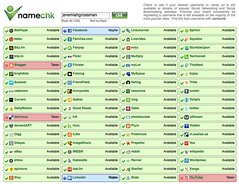Thanks,
Brett
A computer, network, and web application security blog focused on helping ordinary people understand security issues.

statement = "SELECT * FROM users WHERE name = '" + userName + "';"a' or '1'='1 into the username field. This creates the following SQL statement:SELECT * FROM users WHERE name = 'a' or '1'='1''; DROP TABLE users;--statement = "SELECT * FROM users WHERE name = ''; DROP TABLE users;--';


The tightly managed criminal organizations behind such scams—often based in Russia and former Soviet republics—treat malware like a business. They buy advanced code on the Internet’s black market, customize it, then sell or rent the resulting botnet to the highest bidders. They extend the worm’s life span as long as possible by investing in updates—maintenance by another name. This assembly line–style approach to crime works: of all the viruses that Symantec has tracked over the past 20 years, 60 percent of them have been introduced in the past 12 months.This shouldn't be suprising. If criminals have no problem killing another human and taking their wallet, why would they have problems stealing massive amounts of money electronically?

The PCI Data Security Standard (DSS) has had a huge impact on the information security industry. One effect that it has had is to make annual penetration testing mandatory in some segments, and thereby spawn a whole new class of off-the-shelf penetration testers.The term "off-the-shelf penetration testers" makes my stomach churn. It is my belief that hacking is more of an art than a science. Hacking is methodical, but takes a specific type of person to do it. Typical hackers are very methodical and analytic. In addition, ever hacker that I have ever met has a never-give-up mentality about them. This attribute is used as a feedback loop into the problem they are working on.


"It's like building the titanic. The ship's designers optimized around being able to withstand collisions at the sacrifice of maneuverability. There have been many theories over the years over why the Titanic sank, from Brittle steel to sub-standard rivets. But, in reality, it is obvious why the Titanic sank. It couldn't get out of the way of the iceberg. The Titatic's designers focused on size, strength, resilience, and luxury but not on maneuverability."I think Mr. Truskowski's talk was the hidden gem at RSA. It is an interesting idea for security vendors to begin focusing on things other than threats. Of course, if the idea gets legs, it will be 10-15 years before any change occurs. It is great to see people thinking holistically about security.




